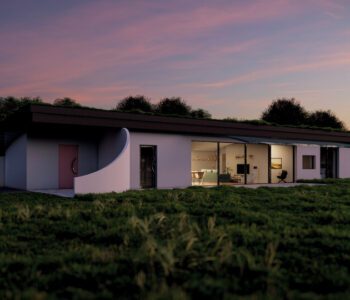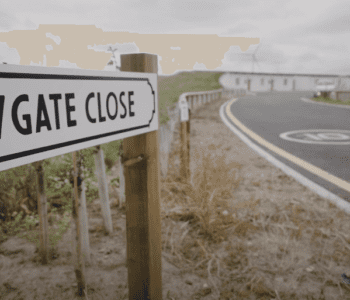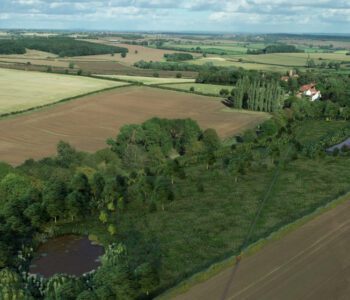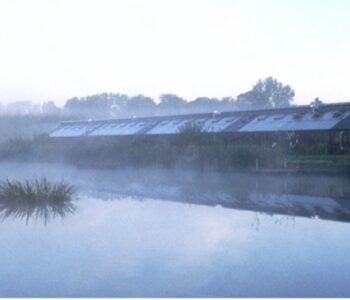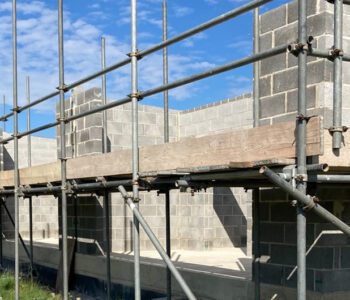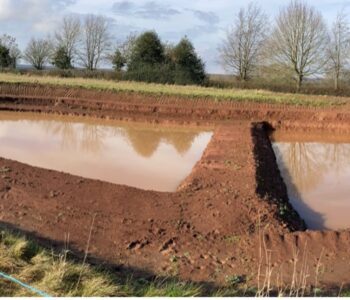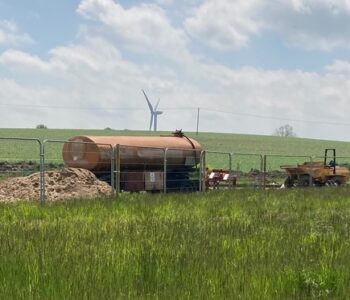
Eakring, Nottinghamshire: A Story of Transition
Perhaps nowhere in the UK is the process of decarbonisation at a settlement scale more apparent in the built environment than in the Nottinghamshire village of Eakring. Once the country’s largest inland oilfield, it’s now generating enough renewable electricity locally to power the village several times over. Seventy years after the last drop of oil was extracted, Eakring is expanding with nine fossil-fuel-free homes, ‘Howgate Close’.
During its 27years of operation from 1939 to 1966, Eakring’s former oilfield, yielded 3,000 barrels of oil daily from 170 wells, employing 1,200 personnel. So vital was the role of Eakring’s oil during the second world war that Geoffrey Lloyd, Secretary for Petroleum (1940-1942) wrote;
“…Oil was also heat and light and mercy…..it fuelled kitchens, it powered the radios and telephones, it warmed and illuminated the hospitals, it refrigerated the life-saving plasma’s it heated the instrument sterilizers, it ran signal devices, water purification systems, and repaired machinery.”
Eighty years after Eakring No.1 first struck oil in June 1939, a fitting epitaph to Eakring’s oil legacy was erected in the nearby ‘Dukes Wood’, now a Site of Special Scientific Interest. Here a six-foot bronze statue depicts an American oilman aptly named, ‘Oil Patch Warrior’. Lest we forget how this natural resource was won, the five remaining restored nodding donkeys are keeping the Warrior company.
Another of Eakring’s oil exploration legacies resides in the form of the National Grid’s Training Centre. It was on this site that D’Arcy Exploration Company (now BP) set up its ‘Eakring Yard’, which eventually evolved in to BP’s Research Station. From here in 1965, Britain’s first oil rig ‘Sea Gem’ was developed and its 200feet high structure pre-assembled in Dukes Wood. ‘Sea Gem’ was later shipped from Great Yarmouth achieving Britain’s first hydrocarbon discovery in the North Sea’s British Sector, now known as ‘West Sole Field’. Many of the rig’s crew where Eakring Yard personnel.
A Journey of Decarbonisation
Once Britain’s oil exploration epicentre, Eakring’s nodding donkeys are now replaced with solar farms and wind turbines. In the last decade, three wind turbines have been erected within the Parish, a 12mW solar farm built on Bilsthorpe Road and over 250kW of roof mounted photovoltaics installed within the village. A concomitant benefit for Eakring Parish Council is it receives a 25year annuity of £7,000 annually.
Eakring is now emerging as a settlement in transition, on a journey to decarbonisation. Enough renewable electricity is already generated locally to power the village, but in a post-hydrocarbon era, buildings will likely generate their own energy.
One such enterprise is Eakring Farm, from its roof mounted photovoltaic panels, generate 130,000kWhrs annually, making the farm a net producer of renewable energy. When energy storage facilities become commercially viable, the farm will have the ability to become energy independent, another step towards decarbonisation.
In May 2022, Eakring is to have nine fossil-fuel-free homes completed, providing local residents with post-hydrocarbon era ready homes. Each of the properties will have the ability to generate a surplus of energy annually. It’s estimated the surplus energy could be enough to power another similar dwelling.
Eakring is a settlement that has started the process of transitioning to a post-hydrocarbon era, leading its own journey of decarbonisation. Perhaps this Nottinghamshire village is unique in the UK. Within its environs it still has standing the apparatus used for the winning of fossil fuels sitting alongside the apparatus used for delivering fossil-fuel-free energy.
Dr Jerry Harrall
